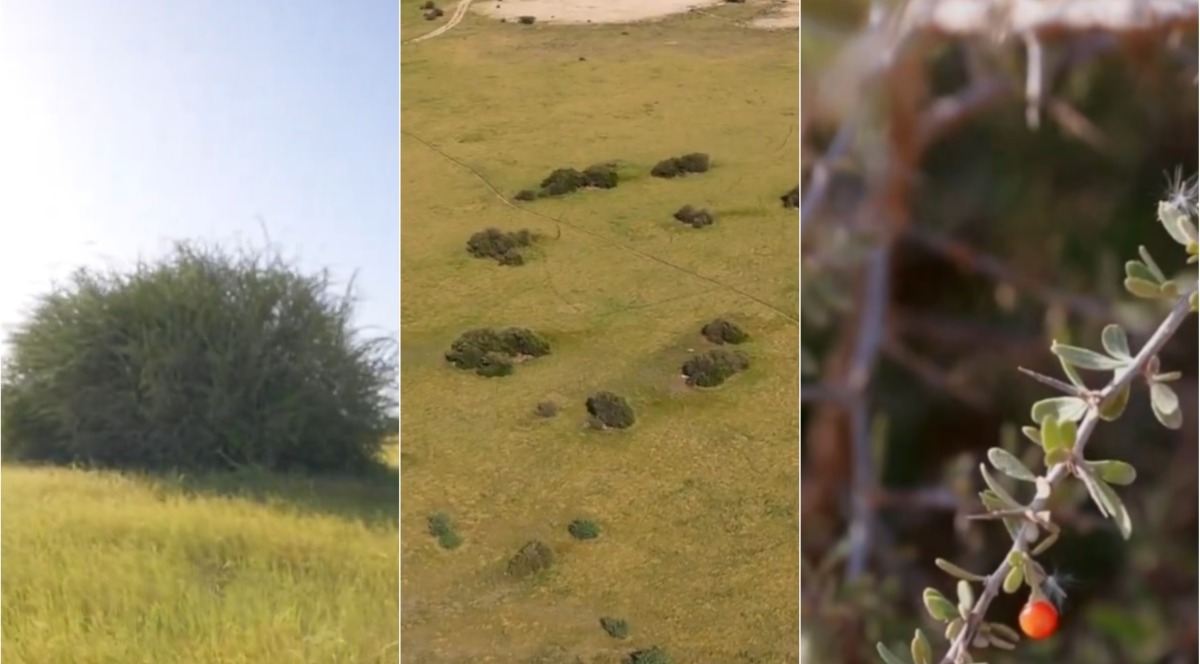The Ministry of Environment and Climate Change in Qatar has recently completed the fencing and rehabilitation process of the unique “Mehairja” garden in the northern region of the country. This garden, with an area of 249,141 square metres, is a vital part of the Ministry’s garden fencing project. What sets the Mehairja garden apart is its environmental significance and the presence of various important pastoral and medicinal plant species, including thorn tree species such as Vachellia tortilis and Lycium shawii. Additionally, the garden is home to a variety of perennial and seasonal plants like Pulicaria undulata, Stipa capensis, and Piptanthus, among others.
The completion of the rehabilitation of the Mehairja garden is a significant step towards realizing the Ministry’s vision of a cleaner and sustainable environment in Qatar by 2030. This project is part of a larger effort by the Ministry to protect and preserve the country’s natural resources and biodiversity. By rehabilitating and protecting unique ecosystems like the Mehairja garden, the Ministry is working towards promoting environmental awareness and conservation among the local community and visitors alike. The garden serves as a living example of Qatar’s commitment to environmental sustainability and the preservation of its natural heritage.
The Ministry’s focus on rehabilitating the Mehairja garden is in line with Qatar’s broader goals of promoting sustainable development and protecting its natural environment. By creating a fenced and rehabilitated space for a diverse range of plant species to thrive, the Ministry is not only enhancing the local ecosystem but also providing a sanctuary for wildlife and contributing to the overall biodiversity of the region. The garden is a testament to Qatar’s dedication to environmental conservation and serves as a model for other countries to follow in their efforts to protect and preserve their natural landscapes.
The completion of the fencing and rehabilitation of the Mehairja garden marks a significant milestone in the Ministry’s efforts to create a more sustainable and environmentally friendly Qatar. The garden’s unique plant species and diverse ecosystem make it a valuable resource for scientific research and education, as well as a peaceful retreat for visitors to enjoy and appreciate the natural beauty of the region. By investing in projects like the Mehairja garden, the Ministry is not only improving the quality of life for local residents but also setting an example for sustainable development practices that can be implemented on a larger scale.
In conclusion, the completion of the fencing and rehabilitation process for the Mehairja garden in Qatar is a testament to the Ministry of Environment and Climate Change’s commitment to environmental sustainability and conservation. By preserving and protecting unique ecosystems like the Mehairja garden, the Ministry is working towards creating a cleaner and more sustainable environment for future generations. The garden’s diverse plant species and thriving ecosystem are a source of pride for Qatar and serve as a reminder of the importance of preserving the country’s natural heritage. The Ministry’s efforts to rehabilitate the Mehairja garden are a step in the right direction towards achieving a cleaner, greener, and more sustainable future for Qatar and its people.











